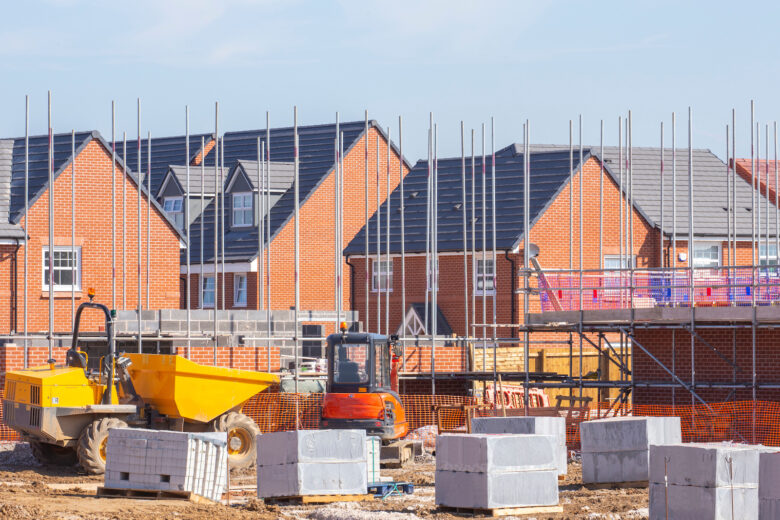
Why Do I Need an Independent Snagging List?
Buying a new-build home should mean you move into a perfectly designed and built property without any flaws or defects. Unfortunately for many buyers, this often isn’t the case. Homebuilders are often on tight deadlines and working on multiple properties at the same time, so it’s no surprise that some things can slip through the net. While you can compose your own snagging list and try to convince the developer to rectify the issues, having an independent professional do it for you will lead to a much better chance of success and mean much less hassle for you.
What is a snagging list for?
A snagging list is designed to pick up all those small issues and minor cosmetic and functional defects that a developer may not have spotted or felt the need to rectify. The developer may offer to do this or suggest you create a list for them, but having an independent inspector assess your property is a much better option. As the developer may not be keen to make more work for themselves and as you probably won’t know the ins and outs of what’s their responsibility, a specialist can save you time and money and ensure your house is a safe place to live once you move in.
Doesn’t my property get checked for defects?
Yes, your new home will have passed building regulations inspections and should come with a structural warranty. However, there may be defects caused by different work going on simultaneously, such as smoke alarms may not be fitted with batteries, floors may have been splashed with paint, or tiles may have been cracked. Functional issues, such as insufficient sealant around baths and sinks, doors not shutting properly, and radiators not fully working, are common. There are so many aspects to a new home that the list of potential problems is virtually endless. Many of these could only be spotted once the property is ready to move in, and many require a professional eye to assess them, making a snagging list essential.
What should you expect from a snagging list inspection?
During a professional, independent snagging list inspection, your experienced inspector will look at both the interior and exterior of the property for defects. If your new build is flat, they’ll also assess any communal areas, such as stairways, entrances and other shared facilities.
Some snagging lists will focus on cosmetic issues, while others will offer a more detailed insight. Novello, for example, will test sockets, use thermal imaging cameras to assess underfloor heating and radiators, and anemometers to ensure extraction fans work and highlight more minor defects. When looking for a company to conduct your snagging list, ask what their service includes, so you know you’re getting a thorough report.
Once the snagging list is completed, both you and your solicitor will receive a copy of the report, which will give an overview of the property’s condition and the details of any defects that need fixing. Look for a surveyor that includes photos of defects and estimates of repair costs, as this level of detail will help you in any discussions with the developer.
Are snagging lists worth the time and cost?
Although new builds should be flawless, the reality is often far from this. Some surveys suggest half of new builds have defects, while others claim that the average new build contains between 50 and 150 defects. While you may be able to spot some of these yourself and have the patience to liaise directly with your developer to get them fixed, spending a few hundred pounds on a snagging list gives you much more leverage and takes some of the hassle away from having to convince the developer to finish the job properly. A snagging list service could potentially save you thousands in repairs and mean you get to enjoy living in a perfect new home even sooner.
What are the advantages of a snagging service?
The main benefit of an independent snagging report is that it will give you more leverage when asking your housebuilder to fix defects. As the report has been created by an independent professional and should include photos of any issues, your developer won’t be able to claim there isn’t a problem. It will also ensure that your property is thoroughly checked, and you will be fully aware of any problems your new home may have. An experienced inspector will also be able to identify faults you may not notice. And remember, you might end up having to cover the cost of repairs yourself if you can’t get the developer to meet their obligations, so having impartial evidence can be key.
When should I get a snagging list?
Technically you can have a snagging list done at any time during the first two years of living in a new-build home. However, the longer you leave it, the harder it’ll be to get the developer to come back and do the necessary work. That being the case, the best time to have a snagging inspection is the period between building work being finished and when you complete. This gives the developer time to fix any snags before you move in.
However, some developers won’t allow snagging inspections to be done before completion, in which case you should arrange it for as soon as you can after you’ve moved in. That way, the developer will still be on-site, and they can’t claim that you’ve caused any damage while living there. If you notice any defects between moving in and the snagging inspection, take a photo of it, ideally with a timestamp, so this can be added to the report.
Can the housebuilder refuse to fix the defects?
As your new home will be under warranty for the first two years, if your snagging list is done in this time, your developer is obliged to rectify any issues within eight weeks of being informed about them.
Of course, your developer may claim that you caused the defect or that it isn’t covered under your warranty terms, so there may need to be some negotiation here. If you are struggling to resolve any issues, your warranty provider may be able to help you.
The National House Building Council, which provides warranty and insurance for most new homes, offers a free resolution service.
The Novello Approach
Novello’s Snagging List service is cost-effective to ensure your new build is in pristine condition without any hidden defects. We will investigate every aspect of your home to identify anything that isn’t quite right. Common issues we find include uneven stairs and floors, cracking to plaster finishes, unfinished fittings and poorly installed doors, windows and frames. We’ll document and photograph any issues we find and deliver a clear and comprehensive report to you in a matter of days so you can have all the evidence you need to make sure the developer finishes the job to the highest possible standards.
Get a free quote or contact us today to find out more.

